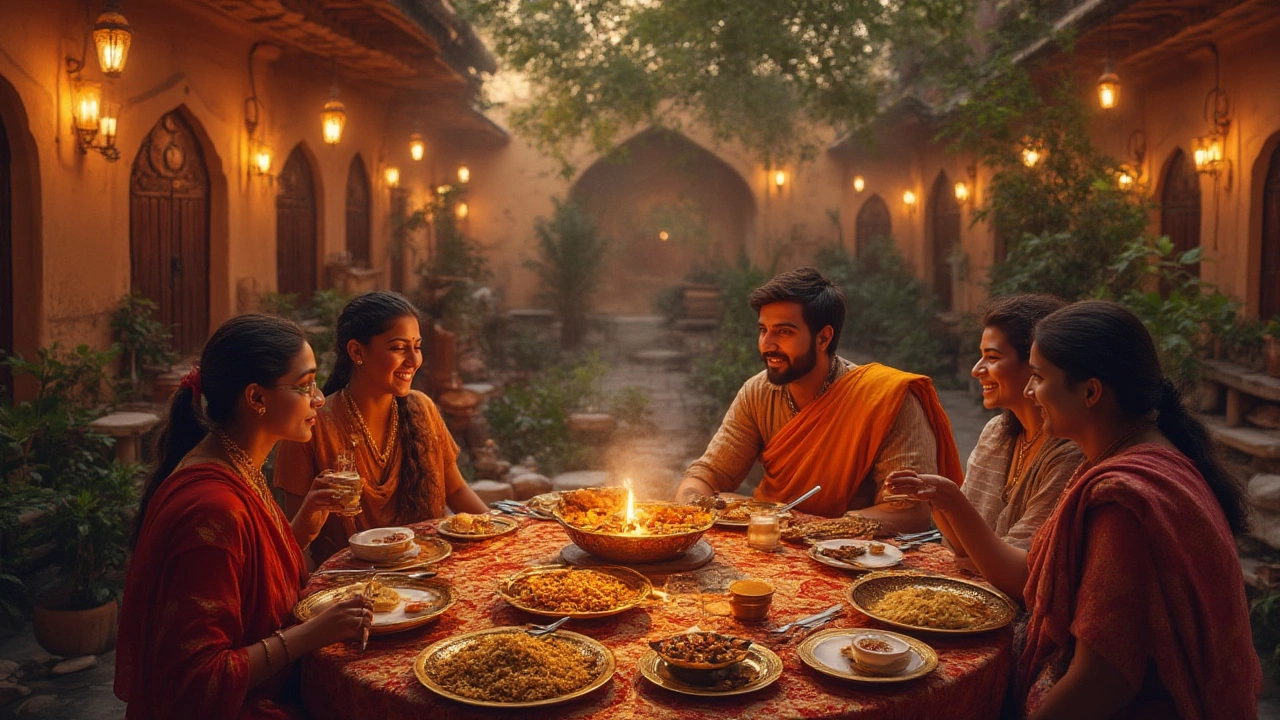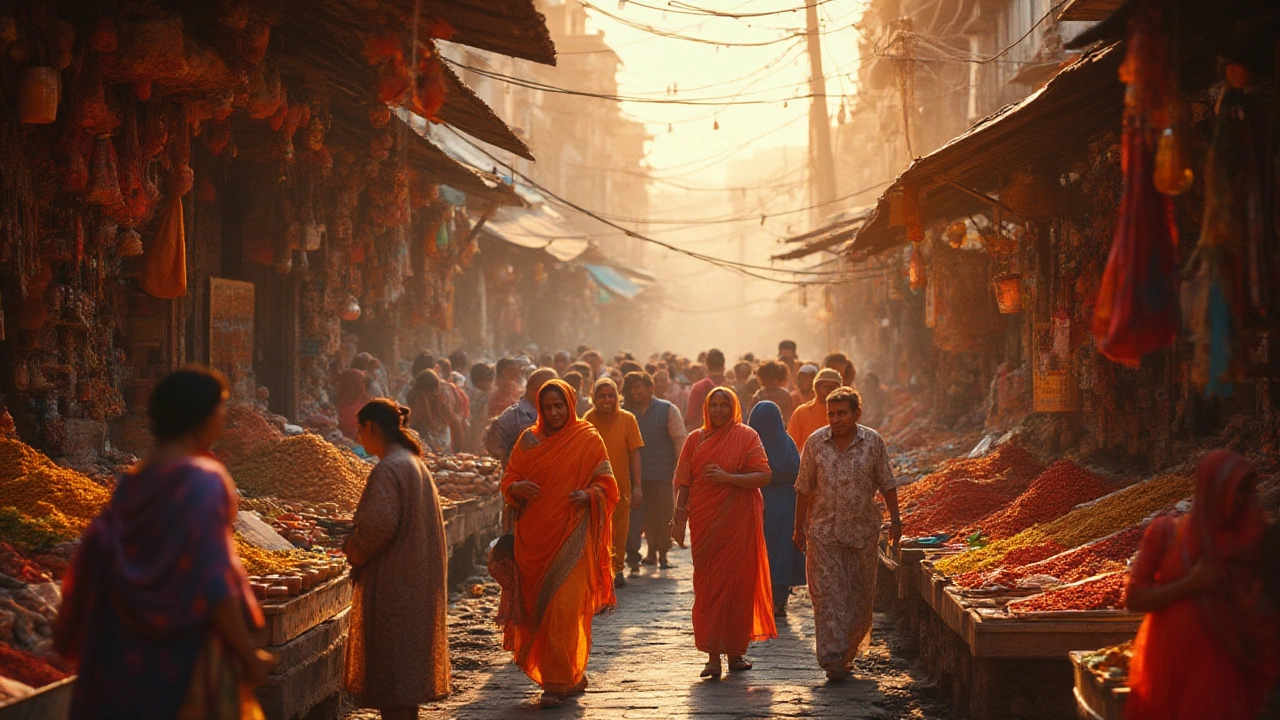Imagine arriving in a place so bursting with life, color, and sound that it feels like stepping into another dimension. That’s India for you. Tourists don’t just visit India—they fall deeply, sometimes ridiculously in love with it, flaws and all. Skip the familiar travel clichés. What is it about India that hooks people? Maybe it’s the way a single train journey can flip from chaos to serenity without warning. Or the food that changes flavor every hundred kilometers. Any parent who’s navigated Delhi’s spice markets with kids who only want ice cream knows: India doesn’t just welcome you, it challenges you. And once you’ve let go and embraced that challenge, you’re hooked for life.
A Cultural Patchwork That Thrills the Senses
Calling India diverse is putting it mildly. This is a country where over 1.4 billion people coexist, speaking more than 120 major languages and thousands of dialects. It’s wild to think you can move from the singing camel herders of Rajasthan’s deserts to the quietly spiritual Buddhist monasteries of Ladakh, all within a couple of days. For visitors, this jumble of customs is intoxicating. People pour in from all over to experience Holi, where you leave looking like a walking rainbow; or Diwali, when the whole country sparkles with light. My kids still talk about getting mehendi painted on their hands and being fussed over by grandmothers in Varanasi.
The variety extends to faith. Temples, mosques, churches, gurdwaras—India is famously tolerant, with religions practiced side-by-side. You might wake to the sound of a call to prayer, stumble on a Hindu wedding procession at lunch, and dine near a Jain temple at sunset. Even if you’re not spiritual, this blending of traditions grabs everyone’s curiosity. Culture-hounds love major museums, but honestly, just spending time in a public park, train station, or bazaar is an immersion experience. Travelers who want to learn more can take part in craft workshops—pottery, block-printing, Kathak dance—offered all over the country, and visitors are genuinely welcomed by local artists and families.
It's not only about festivals and crafts; it's about daily life too. The wedding season from November to February is a magnet for photographers and fashion lovers. Some cities like Jaipur and Udaipur are among the top international wedding destinations, and elaborate Indian weddings can involve elephants, fireworks, and parades. India gives visitors permission to celebrate big, loud, and unabashedly, and this cheerful chaos is a big part of the pull.
The Landscape: From the Himalayas to Tropical Beaches
One week you’re sweating through Rajasthan’s 45°C desert, the next you’re waking to the icy bite of Himalaya wind. Few countries offer landscapes this varied. Let’s look at some standouts: Kerala’s backwaters, where you can float on a houseboat past rice paddies; Goa’s golden beaches framed by swaying palms and the occasional wandering cow; the neon-green tea plantations of Munnar. Want world-class trekking? Try Himachal Pradesh or Uttarakhand, where winding paths lead to snowy peaks, ancient temples, and remote villages where you can eat home-cooked dal with a view of valleys below.
One awesome thing: India is a real treat for wildlife lovers. The country has over 100 national parks! Spot a tiger in Ranthambore or a one-horned rhino in Kaziranga. Check this out—the Gir Forest in Gujarat is the only place where wild Asiatic lions still roam. Birdwatchers plan entire trips around the Keoladeo National Park in Bharatpur.
Southern India stuns with its own landscapes. There are the rolling hills of Coorg and lush mangroves in the Sundarbans. Eastern India brings you the forests of Odisha and monasteries perched over the clouds in Sikkim. It’s impossible for even the most jaded traveler to run out of places that make your jaw drop. For families, many hill stations offer pleasant weather all year and places like Ooty or Mahabaleshwar deliver strawberries, pine forests, and toy train rides the kids will remember for years.

Indian Food: Flavor Bombs and Street Feasts
No traveler can talk about India without raving about the food. It’s a huge reason people return. North Indian thali—loaded with buttery curries, fluffy naan, and pickles that’ll singe your nostrils—sits completely apart from the dosas and coconut chutneys in the south. The street food is legendary. Pani puri (hollow crispy dough filled with spiced water), vada pav (Slider-sized potato sandwiches) and samosas hot from the fryer—these are snacks you’ll miss long after you leave.
Eating becomes a whole adventure. Food markets buzz from pre-dawn chai stalls to late-night dessert carts. If you want to experience real local life, join a morning food walk in Old Delhi (where breakfast might include jalebis, savory chickpea curry, and spicy paratha). Every city brings its own signature treat: Hyderabad offers fiery biryani, Kolkata dazzles with sweet rasgulla, Amritsar dishes up buttery kulchas. Even McDonald’s here has a McAloo Tikki Burger just for the local palate.
Tourists with food allergies or kids wary of spice? Most restaurants are happy to adjust the heat level or point you to milder dishes. Even vegan and gluten-free travelers find it surprisingly easy to eat well—dal, rice, rotis, tandoori vegetables, and coconut-based stews make up huge parts of the eating culture. And for those who love a local tip: never skip a cup of roadside chai, thick with ginger, cardamom, and enough sugar to power a small city.
Tangible Tips For Tourists: Navigating Like a Pro
Newcomers sometimes worry India will be overwhelming (and sure, it can be), but there are ways to make your visit smoother. Start with the basics: bring some local cash for rickshaws and food stalls, but use digital payment apps for bigger stuff—they’re super common now, even in smaller towns. Carry filtered water bottles or buy sealed bottles from shops you trust. For public transport, trains are both iconic and usually reliable—book in advance for long trips. Uber and Ola cabs work in most cities and are safer than random taxis.
Dress comfortably and respect local customs: in temples and rural areas, keep knees and shoulders covered. Slip-on shoes come in handy because you’ll be taking them off a lot. Traffic can be wild; use footbridges and always look both ways before crossing—my son still calls it “the daily adventure.” If you’re shy about spicy food, say “no chili” and taste-test in small bites.
| Top Indian Destinations | What Makes It Unique |
|---|---|
| Agra | Home to the Taj Mahal, a must-see world wonder |
| Jaipur | “Pink City” with royal palaces and bustling bazaars |
| Varanasi | Sacred city on the Ganges, full of spiritual rituals |
| Kerala | Lush backwaters, spice gardens, healing Ayurveda |
| Goa | Beaches, historic churches, buzzing nightlife |
Staying safe? Eat hot, fresh food (especially street snacks), wash your hands often, and keep an eye on your bag in busy places. December to March is peak tourist season—milder weather and big festivals—but monsoon (June to September) shows another side, lush and dramatic. Curious about shopping? Haggling is totally normal in open markets. For unique souvenirs, try block-printed textiles from Rajasthan, sandalwood carvings from Mysuru, and silver jewelry in Gujarat. If you want to give back, lots of tours and homestays are run by local women’s cooperatives or village groups, so your money goes right into the communities you’re exploring.
The magic of India is that it’s never just a checklist of monuments. It’s chai with strangers, monsoon rides in train compartments, the chaos and comfort that mix together in ways you’ll never expect. Whether you’re traveling solo, with kids, or as a seasoned explorer, there’s a reason India stays with you long after your return. It's that sense of constant discovery—the little surprises around every corner, each bus ride, and every meal. That’s why tourists keep coming back, and why India just might charm you, too.
